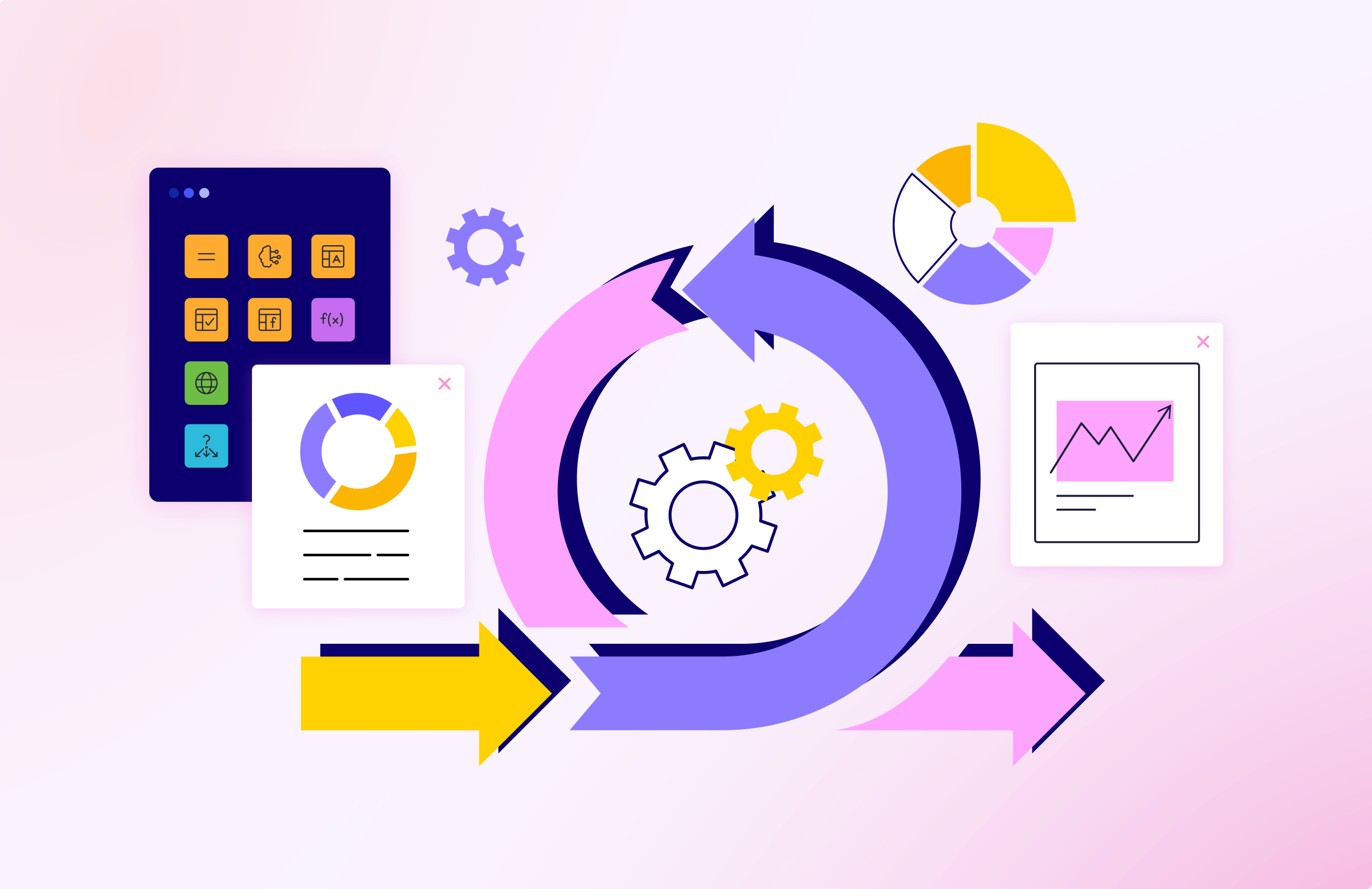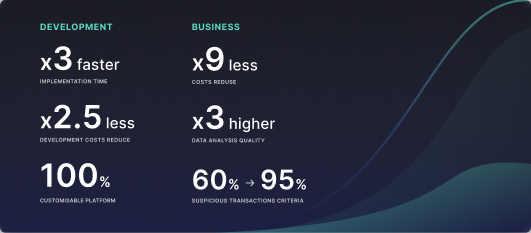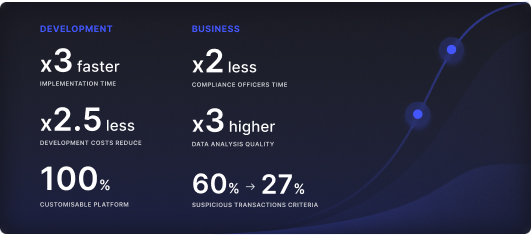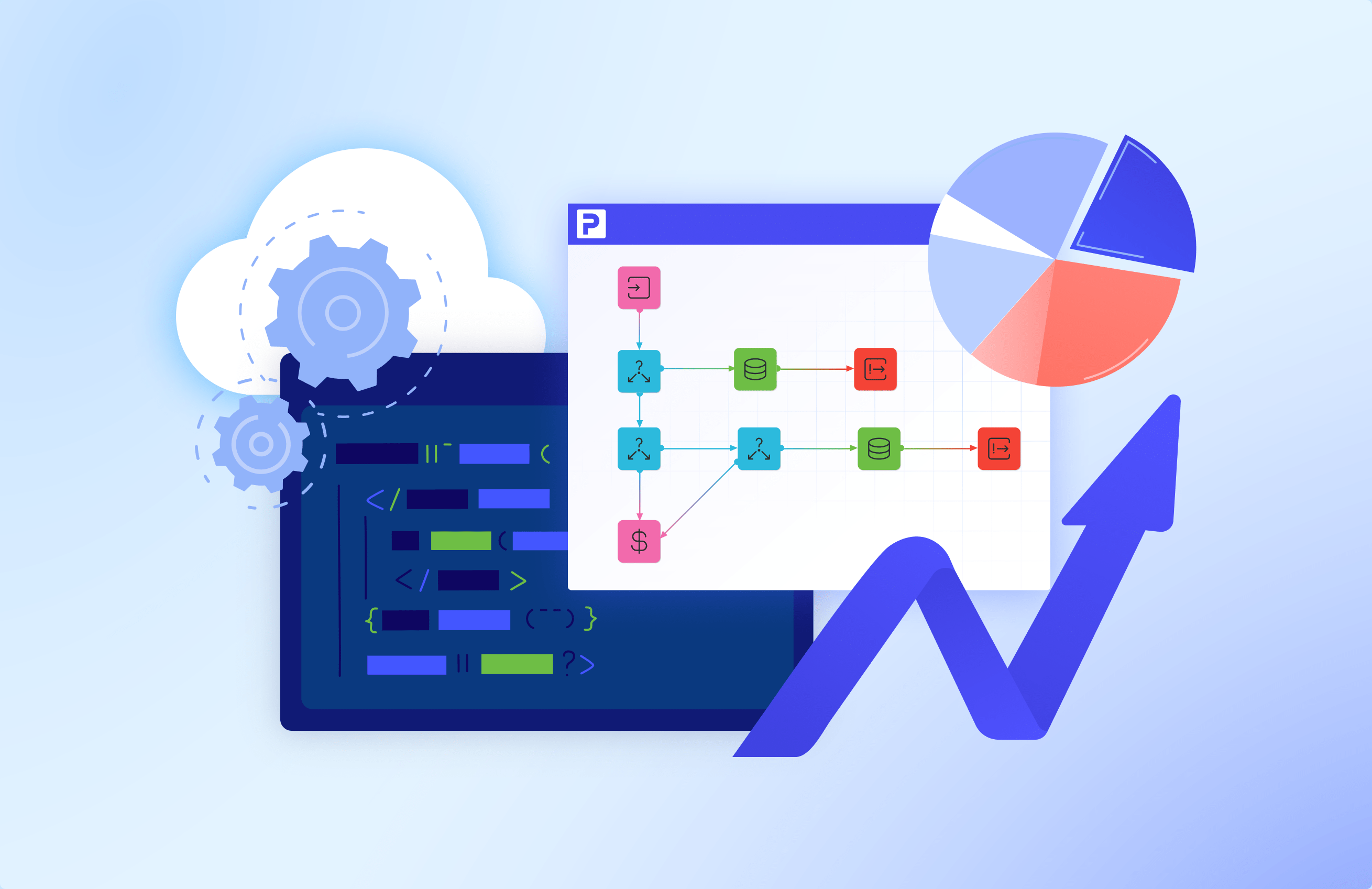Agile Process Management: Adapting to Change with Speed and Flexibility


Are you still experiencing lengthy and tiresome software development projects that eventually don’t satisfy you? Do you have a hard time meeting all the customer needs and fitting the product into the market? The problem can be in the way you manage your development process from start to finish. Maybe, the good old waterfall approach doesn’t work for your projects anymore and it’s time to try something new like agile methodologies.
In recent years, agile approaches have gained appeal as a more flexible and adaptive approach to software development. Agile focuses on cooperation, continuous improvement, and providing value to consumers quickly and frequently. It differs from standard waterfall processes, which rely on significant preparation and documentation.
In this post, we will look at agile techniques, their merits, and how they may be used in many sectors. Understanding agile approaches may help you stay competitive and react to changing market needs, whether you’re a business owner, project manager, or team member. So, let’s get started and discover more about this creative approach to work.
Agile Project Management Definition
Agile project management is a software development process that emphasises flexibility and collaboration while incorporating client feedback throughout the project life cycle. The methodology employs an iterative development strategy, dividing labour into tiny, manageable cycles known as “sprints” to focus on continual improvement in developing a product or service.
Agile project management incorporates cross-functional teams who work closely with stakeholders in a process that allows for adjustments as requirements evolve and formalises feedback loops at the end of each sprint, in addition to emphasising iterative development, in which each sprint results in a potentially shippable increment.
Agile Project Management vs. Traditional Project Management
In several respects, agile project management varies from traditional project management, sometimes known as waterfall. Whereas waterfall project management takes a more rigid, linear approach in which requirements are gathered up front, agile project management emphasises iterative development, which allows for adaptability and flexibility along the way. Agile’s sprint methodology is also distinct from traditional project management, which normally progresses in stages, from requirements gathering to implementation to deployment.
Agile’s approach to customer feedback also allows for more ongoing cooperation with stakeholders, allowing deliverables to be better aligned with end-user needs. Unlike waterfall project management, which often splits team members into isolated jobs, agile project management is cross-functional, with team members frequently taking on multiple roles. Although documentation is important in agile, it is not as important as it is in traditional project management, where documentation is often quite thorough and created in advance.
In comparison to traditional project management, agile provides various project-specific benefits to project teams, sponsors, project leaders, and clients, including:
- More rapid deployment of solutions
- Reduced waste through minimization of resources
- Increased flexibility and adaptability to change
- Increased success through more focused efforts
- Faster turnaround times
- Faster detection of issues and defects
- Optimized development processes
- A lighter-weight framework
- Optimal project control
- Increased focus on specific customer needs
- Increased frequency of collaboration and feedback
When to Use Agile Project Management
However, as with any other methodology, agile is not appropriate for every project, and thorough research is always needed to choose the optimal technique for each individual case. When a project’s requirements are not entirely visible from the start or are expected to evolve during the course of the project, agile project management is most effective. It is also a suitable fit when regular feedback is required or when aligning deliverables with client needs. Agile project management is also a good option when speed to market is critical or when dealing with complicated projects because agile’s cross-functional, iterative approach allows teams to produce solutions faster while resolving difficulties as they emerge.
Agile may not work as intended if the customer is unclear about the goals, the project manager or team is inexperienced, or they do not work well under pressure. Agile favours developers, project teams, and customer goals throughout the development process, but not necessarily the end user’s experience. Agile may not always be easily absorbed within larger, more traditional organisations with considerable degrees of rigidity or flexibility within processes, regulations, or teams due to its less formal and more flexible processes. It may also encounter issues when utilised with customers who have comparable tight processes or operating techniques, or projects subject to strict regulation and paperwork, fixed contracts and scope, or environments where stakeholder feedback is required.
The Benefits of Agile Project Management
Agile was created for the software industry to expedite and optimise the development process to quickly detect and correct bugs and errors. It enables developers and teams to build a better product in less time by utilising short, iterative, interactive sessions/sprints. Agile is a fantastic fit for organisations aiming to improve how they manage projects and operate as a whole in the age of digital transformation, with many enterprises transitioning to a digital workplace. Agile can aid in the alignment of company-wide processes and methodologies. In terms of business benefits, both the digital workplace and agile provide:
- Increased flexibility
- Increased productivity
- Increased transparency
- Higher quality deliverables
- Decreased risk of missed objectives
- Increased stakeholder engagement and satisfaction
Agile Project Management Principles
There are 12 key principles that still guide agile project management today:
- Customer satisfaction is always the highest priority and is achieved through rapid and continuous delivery.
- Changing environments are embraced at any stage of the process to provide the customer with a competitive advantage.
- A product or service is delivered with higher frequency.
- Stakeholders and developers collaborate closely on a daily basis.
- All stakeholders and team members remain motivated for optimal project outcomes, while teams are provided with all the necessary tools and support, and are trusted to accomplish project goals.
- Face-to-face meetings are deemed the most efficient and effective format for project success.
- A final working product is the ultimate measure of success.
- Sustainable development is accomplished through agile processes whereby development teams and stakeholders are able to maintain a constant and ongoing pace.
- Agility is enhanced through a continuous focus on technical excellence and proper design.
- Simplicity is an essential element.
- Self-organizing teams are most likely to develop the best architectures and designs and to meet requirements.
- Regular intervals are used by teams to improve efficiency through fine-tuning behaviors.
How Does Agile Management Work?
Instead of designing the project to be completed in one go, it’s broken up into smaller chunks known as sprints. Each sprint consists of taking on a certain amount of work from the backlog and completing it within a set time frame.
The first step in the Agile process begins with defining the goals of the project, its objectives, and its requirements. This includes input from customers as well as product owners. Then, a list of tasks is created based on these criteria, which will be prioritized according to importance and difficulty.
The team plans each subsequent sprint drawing from this backlog and then works towards completing all tasks over periods of short duration for that particular sprint. During each sprint, there are regular daily meetings where progress can be checked, and any issues can be addressed accordingly.
As additional tasks emerge during the course of the project, they can be added to the backlog based on their priority levels. Through this iterative approach, agile development keeps customer pleasure at the forefront while rapidly generating efficient and flexible software solutions to changing requirements.
Types of Agile Methodologies
There are several different variations of Agile methodology available, each offering its own advantages and disadvantages. These are the most common methodologies:
Kanban
Kanban is a visual approach to Agile that allows teams to collaborate and work more efficiently. It is built on the principle of continuous process improvement and gives team members a clear overview of what has been finished, what has to be done, and how long each activity will take. This strategy assists teams in identifying potential stumbling blocks and visualising their progress.
Online tools are used to depict tasks in different phases of the development process by using digital Kanban boards; cards represent each task on a board, and stages are shown in columns. As tasks proceed from the backlog column to different completion states, team members update their card progress correspondingly, providing a complete picture of where any project stands at any given time.
Overall, Kanban is a useful technique for improving procedures among cross-functional teams who need to collaborate on larger, more complicated projects or initiatives. Kanban, in addition to assisting teams in identifying areas for development, guarantees that work is completed swiftly and accurately without sacrificing quality over quantity.
Scrum
Scrum is an Agile approach that is commonly used by small teams. It entails periodical sprints, which are fixed durations of time allocated to a single purpose. The team is headed by a Scrum master, who removes any hurdles that prevent the team from carrying out their daily tasks. The development team can address existing tasks, impediments, and other issues that may occur in the upcoming sprint during Scrum sessions.
Each sprint begins with a Sprint Planning event in which the development team describes exactly what can be completed during this sprint period and how it will be accomplished. At the end of each sprint, there is a Sprint Retrospective event—basically a review—where all parties may reflect on what was learned from the previous session in order to improve and streamline their process for better outcomes in the future. This recurring meeting serves as an essential checkpoint for us to reflect on our achievements and failures and suggest ways to improve our procedures so that each new sprint is simpler than the last.
Extreme Programming (XP)
Extreme Programming (XP) is an Agile approach that is commonly used in software development to improve team collaboration. It is built on five pillars: communication, simplicity, feedback, bravery, and respect. The method entails regular releases and iterations similar to those found in daily Scrum standups but with a more technical approach and emphasis on how things should be accomplished.
XP’s communication feature is critical for success since it improves cooperation among engineers, designers, and the entire team. This style of communication allows projects to go quicker without losing quality since everyone understands what is expected of them during the development, testing, and delivery stages.
XP keeps teams focused on ensuring the project satisfies client objectives while providing benefits rapidly by emphasising feedback loops within each iteration or release and aiming for continual improvement. Its boldness value encourages teams to “fail fast” so that mistakes are identified early, allowing them to pivot if required with little interruption. Finally, while dealing with client requests, respect is essential since it requires open-mindedness when exploring solutions jointly.
Adaptive Project Framework (APF)
The Adaptive Project Framework (APF) is a method for structuring and managing projects that may be influenced by external factors. This method assists project teams in anticipating future challenges and making timely modifications. Unlike other project management approaches, APF necessitates regular updates from team members in order to keep track of resource changes. This strategy establishes project goals and scope from the start, while additional resources are addressed and reviewed on a regular basis.
Adjusting for changes that occur over time is critical for the success of an APF-based project. Personnel may need to be replaced or teams may need to be augmented; budget savings can become extra possibilities; and hazards should be recognised early on and continuously managed.
The major focus is flexibility – swiftly adjusting to changing conditions in order to accomplish the desired outcomes: efficiently, correctly, and cost-effectively. Organisations that use this adaptive working style have a better chance of completing successful projects on schedule and within their budget, even after unanticipated variables have been accounted for.
Extreme Project Management (XPM)
Extreme Project Management (XPM) is a method for dealing with complicated and unpredictable projects that require a high level of flexibility. No two weeks are the same in this sort of project, and teams must be prepared to alter methods rapidly without becoming overwhelmed.
The key to success with XPM is flexibility, because each sprint typically lasts only a few weeks, which is insufficient time for elaborate preparation or extensive evaluation. Instead, it emphasises trial-and-error techniques, with frequent and rapid adjustments while constantly self-correcting based on stakeholder feedback.
Because of the adaptability of XPM, projects may encounter additional delays at the start owing to all of the modifications required – yet, if properly adopted, will result in speedier outcomes later in the process. When working with XPM, competent project managers who understand and commit to altering procedures until they see effective outcomes are a huge advantage. Finally, it is an excellent method for coping with complexity because it helps businesses to remain flexible and focused on what has been proven to work best at each stage of their progress toward completion.
Adaptive Software Development (ASD)
ASD (Adaptive Software Development) is an Agile technique that enables teams to swiftly adjust to changing needs. The key goal of this procedure is to constantly adapt in order to adequately respond to these changes. ASD divides the developmental process into three stages: speculation, collaboration, and learning.
Because of the non-linear nature, these stages can overlap at any moment, allowing all three to be addressed concurrently. By combining these different processes, provides an environment in which teams may learn and adapt more quickly than if traditional techniques were employed.
In a continuously changing technology world, this accelerated learning environment may be crucial as teams grow more competent at spotting and addressing possible difficulties before they become larger problems needing more resources. Performing repeated cycles of adaptation in each of the three stages also helps to maintain stability, which raises the odds of success with projects that are ongoing for an extended length of time.
Furthermore, by effectively implementing this procedure, there will be fewer surprises later on when needs evolve once again. Adaptive Software Development enables organisations to stay on top of their industry’s ever-changing landscape rather than constantly playing catch up.
Feature Driven Development (FDD)
Feature Driven Development (FDD) is a project management style that combines the finest Agile methodologies while focusing on the features required in the end product. It fosters consumer and stakeholder cooperation, gathering feedback to prioritise which features should be developed and detailed into precise phases. This technique also enables for numerous iterations and updates, which improves flexibility when problems emerge or adjustments are required.
The primary purpose of FDD is to provide high-quality software in a timely manner based on client needs. Short development cycles broken into smaller sub-phases are prioritised so that progress can be easily observed throughout the product’s lifespan. Because customer feedback is essential, all team members must maintain open lines of contact with them throughout the process.
To achieve success, developers must maintain their focus on understanding user stories while creating targets that must be met at the conclusion of each work cycle. All of these factors combine to make FDD a powerful tool for promoting innovation in software development teams by enabling constantly developing products with features customised directly to client demands.
Accelerate Agile Project Management Strategy with ProcessMIX
ProcessMIX is a converged platform created by professional developers for professional developers. It unites the low-code back-end software builder with middleware capabilities.
As a low-code tool, ProcessMIX offers a set of pre-build code components that you can freely change to fit your project requirements. The visual development tool, in turn, allows developers to build the basic structure of software faster and focus more on user experience and functional parts. At the same time, ProcessMIX is embedded with an array of productivity tools for code testing, seamless integration, and accelerated CI/CD processes.
As a middleware, the platform makes it easy to integrate the application with your existing systems and development environments. Integrating a ProcessMIX back-end with another web/mobile app, 3’d party service, or existing digital system, can take a few minutes.
This unique combination of functionalities allows professional developers to build fully customized back-end solutions for different industries at short notice with no hassle. Get a free ProcessMIX Demo and see the benefits of the low-code platform for professional development for yourself.
 Visual Development
Visual Development Assignment of risk level and customer category within KYC processes at customer onboarding
Assignment of risk level and customer category within KYC processes at customer onboarding Cross-Sell Offer Calculation for the 12M Client Base
Cross-Sell Offer Calculation for the 12M Client Base

